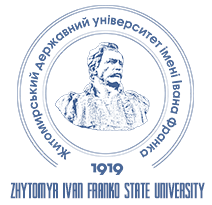Diagnosis of the interpersonal tolerance manifestation of senior preschool children
DOI:
https://doi.org/10.35433/pedagogy.1(96).2019.5-10Keywords:
interpersonal tolerance, diagnostic criteria, indicators of manifestation, methods, diagnostic methods.Abstract
The article analyses the research methodology of levels of interpersonal tolerance manifestation among senior preschool children according to proposed criteria. Based on the structure of the tolerant personality of the senior preschool child, which consists of cognitive, emotional, motivational, evaluative, and behavioral components, the following criteria for diagnosing interpersonal tolerance of children has been singled out. These consist of the completeness of knowledge about society and about oneself, positive emotional intentions, social motives, acceptance of a human being as the supreme value, impartial assessment of actions and personality traits, tolerant behavior, and social competence. Each criterion is measured by the indicators presented in the article. Based on the existing academic literature, the following methods and techniques for diagnosing the peculiarities and levels of interpersonal tolerance formation of six year old children are analysed: conversation, observation, K. Taylor's game test "Tale", the projective technique "Cactus", icons, drawing, the methodology "Diagnosis of socio-psychological settings of the personality in the motivational sphere" by O. F. Potemkin, the test "Drabinka", and the express diagnostics of values by T. Pirozhenko, S. Ladyvir. The experimental work carried out made it possible to draw conclusions about the major problems and shortcomings that take place in the structure of the tolerant personality of the senior preschool child. Furthermore, these conclusions point towards the direction of further work that is needed to increase the level of interpersonal tolerance formation. In particular, this applies to the knowledge of peoples and nations living in other countries, including their peculiarities and traditions. Additional work is also required in the sensory sphere, the ability to respond to the condition of another person, and detachment from one’s own selfish position. Therefore, it will be appropriate to focus on the development of the child’s decentralization and self-assessment. The obtained results lend support to simulating the content-technological support that will increase the level of interpersonal tolerance of children.
Стаття розкриває методику дослідження рівнів прояву міжособистісної толерантності старшими дошкільниками згідно запропонованих критеріїв. З опорою на структуру толерантної особистості старшого дошкільника, яка містить когнітивний, емоційно-мотиваційний, оцінно-ціннісний, поведінковий компоненти, виокремлено наступні критерії діагностики міжособистісної толерантності у дітей: повнота знань про суспільство, про себе; позитивна емоційна налаштованість; просоціальні мотиви; прийняття людини як найвищої цінності, об’єктивна оцінка вчинків, якостей особистості; толерантна поведінка, соціальна компетентність. Кожен критерій вимірюється представленими у статті показниками. На підставі опрацьованої літератури пропонуються такі методи і методики, що дають можливість продіагностувати особливості та рівні вихованості міжособистісної толерантності у дітей 6-го року життя: бесіда, спостереження, ігровий тест К. Тейлора "Казка", проективна методика "Кактус", малювання піктограм, методика "Діагностика соціально-психологічних установок особистості в мотиваційно-потребній сфері", (О. Ф. Потьомкіна), тест "Драбинка". експрес діагностика цінностей за Т. Піроженко, С. Ладивір. Проведена експериментальна робота дозволила зробити висновки про найбільші проблеми і недоопрацювання, які мають місце в структурі толерантної особистості старшого дошкільника, і вказала на напрями роботи, яким треба приділити більше уваги для підвищення рівня сформованості міжособистісної толерантності у дітей. Зокрема, це стосується знань про народи і нації, які проживають в інших країнах, їх особливості і традиції. Також потребує додаткової роботи почуттєва сфера, уміння реагувати на стан іншої людини, відмежовуючись від власної егоїстичної позиції. Тому доречною буде і посилення уваги на розвиток децентрації та самооцінки дитини. Отримані результати дають підстави змоделювати змістово-технологічне забезпечення, яке сприятиме підвищенню рівня міжособистісної толерантності дітей.
References
Fedorova, M.A. (2016) Obgruntuvannia strukturnykh kharakterystyk moralnykh tsinnostei ditei starshoho doshkilnoho viku [Structural characteristics of senior preschoolers’ moral values]. Nauka i osvita – Science and Education, 9, 88–92 [in Ukrainian].
Ladyvir, S., Dolynna, O., Kotyrlo, V., Kulachkivska, S., Tyshchenko S. et al. (2010) Vykhovannia humannykh pochuttiv u ditei [Bringing up human feelings to children]. Ternopil: Mandrivets [in Ukrainian].
Maksymova, O.O. (2017) Zmistova struktura tolerantnosti ditei starshoho doshkilnoho viku [Сontent structure of tolerance of children of senior preschool age]. Naukovi zapysky Vinnytskoho derzhavnoho pedahohichnoho universytetu imeni Mykhaila Kotsiubynskoho – Scientific Papers of the Vinnytsia Mykhailo Kotsiubynsky State Pedagogical University, 52, 37–41.Vinnytsia: TOV "Nilan LTD" [in Ukrainian].
Downloads
Issue
Section
License
Copyright (c) 2019 O. О. Maksymova

This work is licensed under a Creative Commons Attribution-NonCommercial-NoDerivatives 4.0 International License.
Authors published in this journal agree to the following terms:
a) The authors reserve the right to author their work and grant the journal the right to first publish this work under the Creative Commons Attribution License, which allows others to freely distribute the published work with a mandatory link to the authors of the original work and the first publication of the work therein magazine.
b) Authors have the right to enter into separate additional agreements regarding the non-exclusive distribution of the work in the form in which it was published by this journal (for example, posting work in an electronic repository of the institution or publishing as part of a monograph), provided that the reference to the first publication of the work is maintained therein. magazine.
c) Journal policy permits and encourages the submission of manuscripts by the authors on the Internet (for example, in repositories of institutions or on personal websites), both prior to submitting this manuscript to the editorial board and as it contributes to the emergence of productive scientific discussion, and has a positive impact on the promptness and dynamics of citing a published work (see The Effect of Open Access).

 ISSN
ISSN 





